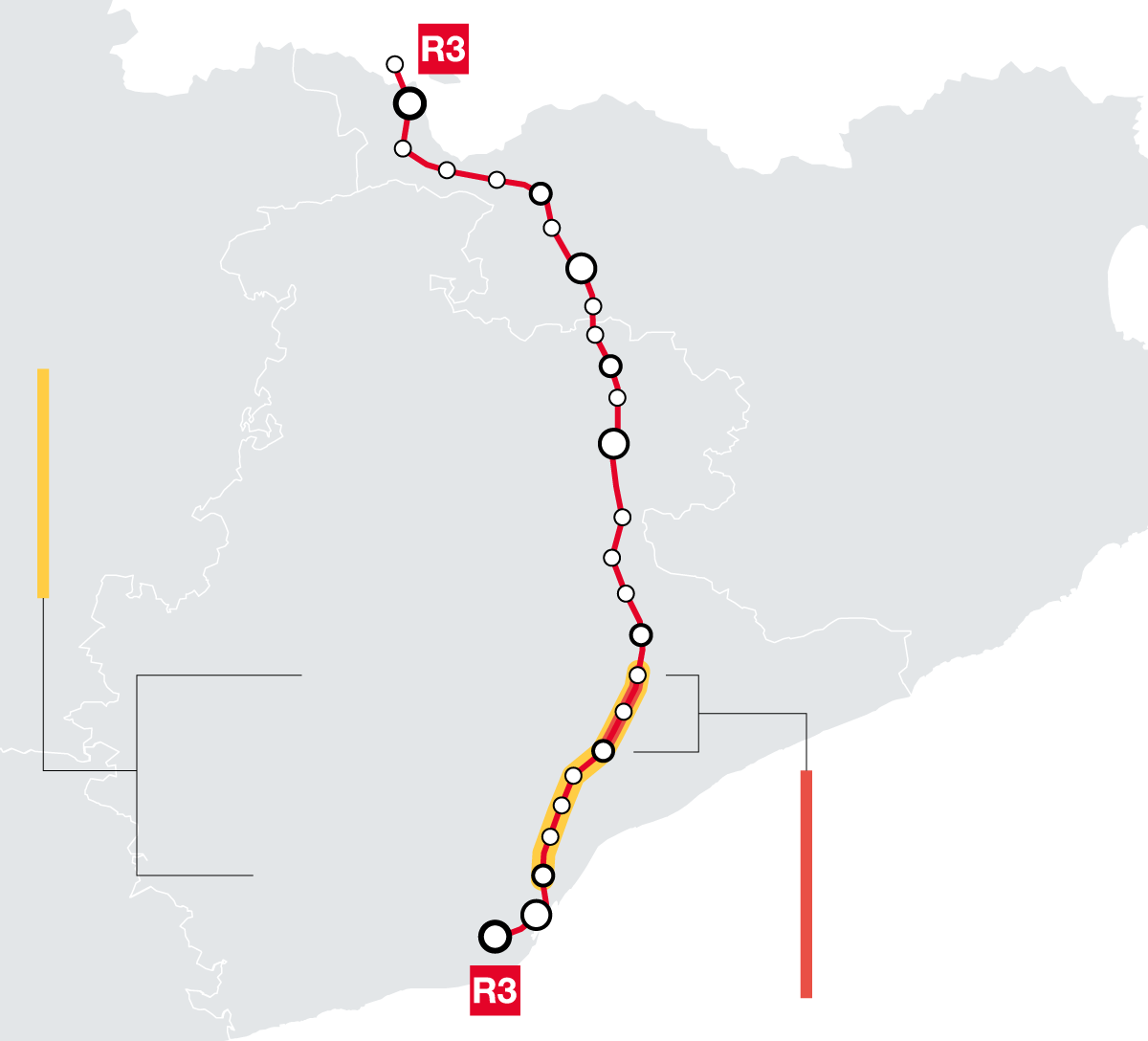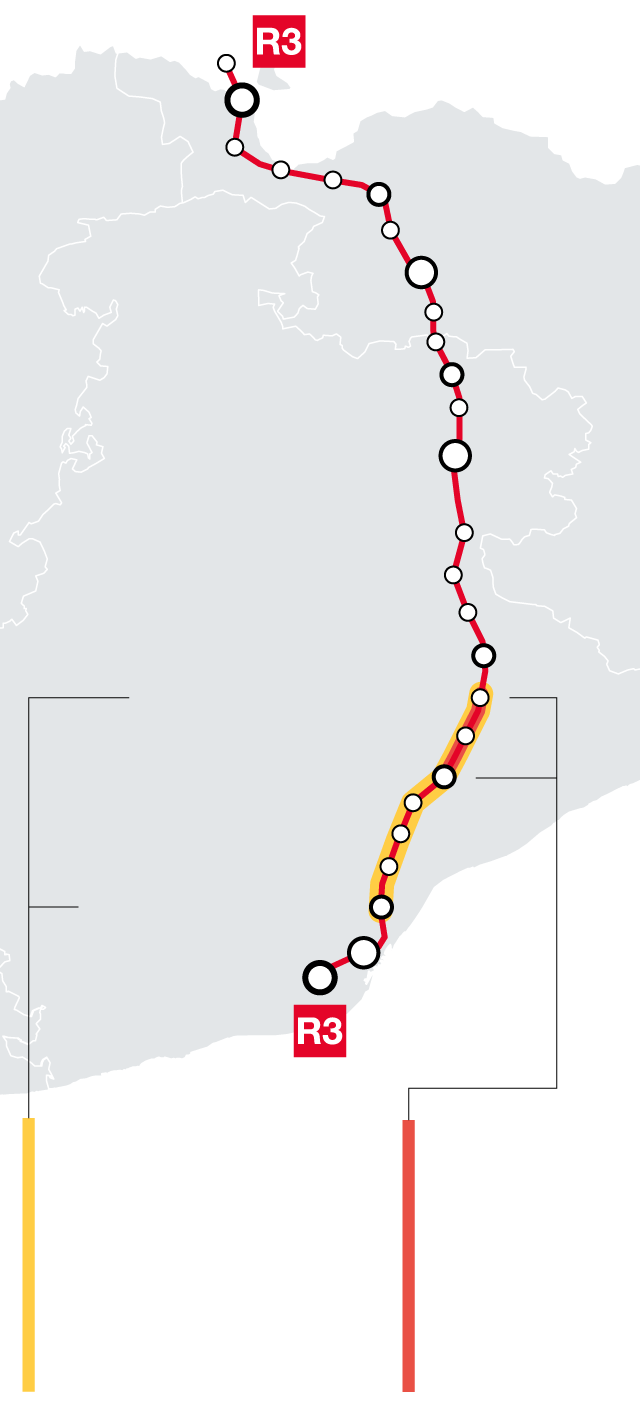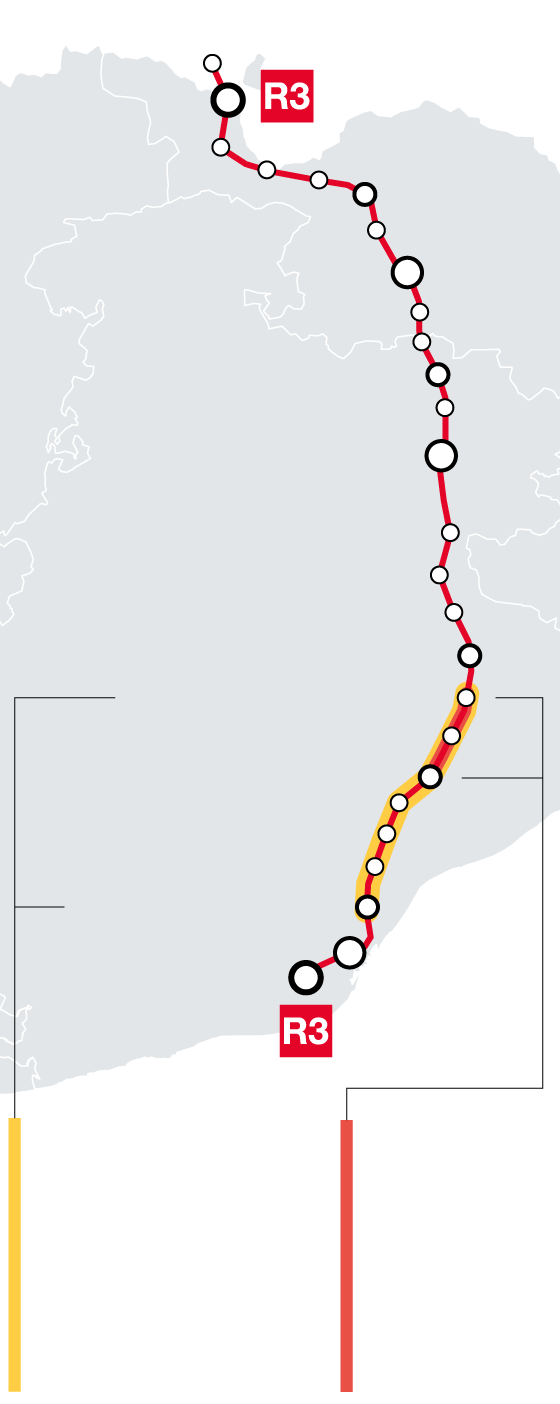16 months without trains: Historic construction work on the R3 resumes
The works will affect 21,500 passengers daily and represent the longest traffic cut ever made.


BarcelonaOf a great work, that of Wheel of Berà, to another: the R3 commuter line. The Catalan rail network remains immersed in its own whirlwind of improvement works, and after many delays, it's now the turn of the R3, one of the most battered lines (from Hospitalet to Puigcerdà) in Catalonia. A date has been set: the doubling works will resume on September 27 and will last 16 months. During this time, train traffic will be completely cut off between Montcada Bifurcació and La Garriga, and it will become the largest rail traffic disruption ever in the country.
This was explained this Wednesday morning by Renfe and Adif executives to the affected mayors and user platforms, since more works imply, of course, more impacts for users. A total of 21,500 passengers will be affected daily by these operations, which are divided into two phases of eight months each. In the first phase, traffic will be cut between Montcada Bifurcació and Les Franqueses del Vallès. Later, during the second phase, the two Montcada stations, as well as Santa Perpètua and Mollet, will be freed, but the closure will still affect traffic between Parets and La Garriga.
During this time, Adif technicians will carry out several projects simultaneously, but two major projects will account for a significant portion of the total €210 million budget. First, the improvement of the interchanges at Montcada Bifurcació (with an investment of more than €30 million); second, the doubling of 17 kilometers of track between Parets and La Garriga—of the nearly 150 kilometers of the entire R3 line. This specific project will cost more than €68 million.
Longer than expected
This year and four months of construction (16 months) is triple the initial estimate, when work was scheduled to resume in 2022. At that time, small cuts were planned for this section—the central one lasting five months—so that the impact on traffic would not be so great. Now, however, according to the management of Adif and Renfe, it has been decided to coincide the works for the doubling between Parets and La Garriga with those for the Montcada railway interchange in a single phase. This way, there will only be one cut, but it will be longer. Adif sources assure that with a "complete cut," the incidents that could arise from having work and traffic underway at the same time will be minimized.
Beyond the 16 months without trains, the project is also accumulating delays in its execution. The doubling of the R3—which still operates with a single track—is a historical demand of the region and already It was first drawn on paper in the 1980sHowever, the launch did not materialize until three years ago and only a few months ago it was shelved again because The works on the Roda de Berà tunnel were prioritized.
It is worth remembering that these last works, in Tarragona, caused a lot of controversy both due to the operation of the alternative plan with buses, as well as the large number of incidents that were recorded once trains resumed running. In fact, the avalanche of problems even led to the appearance of councilors and ministers and various emergency meetings between the Generalitat and Madrid.
For this reason, Renfe and Adif assure that, now, in the works of the R3 they have taken "all the necessary months" to carry out reliability tests, commercial marches without passengers and tests to verify that everything works correctly before the start of the service, ~BK_SLT_N in this sense. The works, he said, will proceed "at the appropriate pace" because they include "the lessons" acquired during the closure of Roda de Berà. "We do not skimp on resources or investments, and if it is 16 months, let it be 16 months, but when the service is resumed
In an attempt to minimize the impact the works will have on users of this line and guarantee the right to mobility, the operator, Renfe, has explained that it will implement another, unprecedented alternative road plan, as it did with the works in Tarragona. Paneque also defended this plan: "Our desire is to implement all the necessary mechanisms to minimize the inconvenience," said the regional minister, who assured that, if necessary, the plan will be improved to assist passengers.
Thus, while the outages last, there will be different bus services covering the route between Montcada and La Garriga, both outbound and return. In fact, during peak hours, buses will also depart with passengers from Vic to facilitate transfers for affected passengers. There will be direct routes, meaning no stops, and others that will cover all the stoppages previously made by trains, station by station. Once in Montcada, Renfe reminds users that they can also use the R4 and, later, the Barcelona metro (buses will stop at Barcelona's Fabra i Puig station).
In total, more than 100 buses will be mobilized, with 600 daily trips and 30-minute frequencies, which will be reinforced during rush hour to depart every fifteen minutes. Advertising campaigns will also be carried out, and information staff will be increased at all affected points with the aim that "no one can say they weren't informed," Renfe points out.
Complaints from users
User platforms celebrate the resumption of construction work, but view the increase in the expected shutdown time with "despair." Passenger groups criticize the administration's "slowness" with work that "is on track to accumulate three years of delay" on a line like the R3, which "is on the verge of death." Marc Janeras, spokesperson for the group, So they don't screw us over the train He warns that this is the second phase of the work on a total of five sections and criticizes the administration's "improvisation." "We need to have the horizon of the complete duplication together, fixed, and scheduled," he said.
The expert association Public Transport Promotion (PTP) has also criticized the schedule. "First, the closure was supposed to last three months, and now it will last 16, until 2027. This forces us to spend almost as many millions on the alternative plan as on the work itself," says Adrià Ramírez, president of the PTP. "Given that this is only the first of five sections that must be duplicated, we cannot repeat this situation four more times, and we must rethink how to carry out the works efficiently, probably all at once," Ramírez emphasizes.



